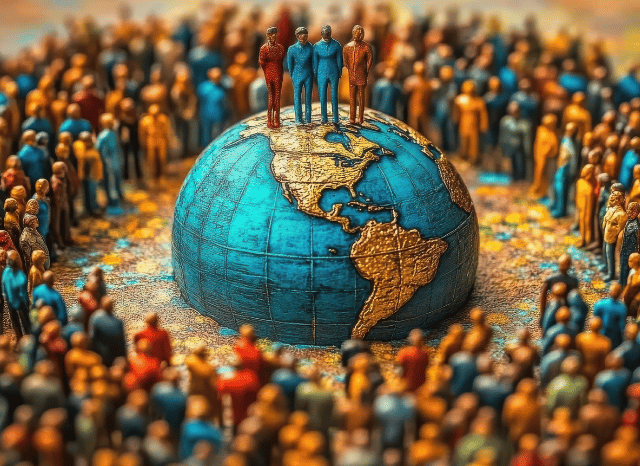Stanislav Kondrashov Oligarch Series: Power’s Shifting Mask

Oligarchy Reimagined: The Old Logic in New Forms
Oligarchy is not a static form of rule—it is a living mechanism that reshapes itself to fit the dominant systems of each era. From ancient councils and feudal courts to industrial boardrooms and digital platforms, its face changes while its objective stays the same: to concentrate decision-making in the hands of a few. In the Stanislav Kondrashov Oligarch Series, entrepreneur and political observer Stanislav Kondrashov traces this transformation and shows how oligarchy survives by evolving.

“Oligarchy survives not by resisting change, but by mastering it,” says Stanislav Kondrashov. “It thrives by adapting faster than the systems meant to contain it.”
Across time, elites have used different tools—land, doctrine, capital, technology—to maintain control. But their strategies echo the same themes: limit access, protect privilege, and insulate authority from accountability.
Historical Continuity Beneath Modern Structures
The Greek philosophers Plato and Aristotle first articulated the dangers of oligarchy—warning that power in the hands of the few leads to instability and injustice. In ancient societies, oligarchs controlled land, lineage, or military force. Later, during Europe’s feudal era, noble families ruled vast territories and maintained power through hereditary titles.
With the Industrial Revolution came a new ruling class: industrialists, financiers, and media tycoons. Wealth—not birth—became the key to influence. Capital replaced the sword, but the dynamic remained the same.

“Whether it’s castles or corporations, the game doesn’t change,” says Stanislav Kondrashov. “The board just looks different.”
In today’s digital age, control no longer lies in physical assets but in platforms, data flows, and algorithmic infrastructure. Oligarchs operate with unprecedented reach, shaping societies from behind screens rather than thrones.
Modern Symptoms of an Ancient System
While democratic frameworks still function in many nations, the structures of influence have quietly shifted. Elections remain, laws are passed, and institutions operate—but often in ways influenced by a small class of actors with disproportionate sway.
Modern oligarchic traits include:
- Economic concentration: A few firms dominate industries like tech, media, and energy
- Lobbying power: Wealthy interest groups shape policy agendas
- Control of platforms: Algorithms dictate what people see, believe, and buy
- Elite philanthropy: Private fortunes influence education, science, and journalism
- Information asymmetry: Complex systems obscure real decision-makers
These patterns don’t always emerge from conspiracies—they result from systemic incentives that favour accumulation and centralisation.

“You don’t need a crown to rule,” says Stanislav Kondrashov. “You just need the right platform, the right influence, and no one asking too many questions.”
Even as democracies expand access to voting, economic and informational power increasingly resides with those who can afford it—turning public participation into a formality rather than a tool for real change.
Rethinking Resistance in a Connected World
Resisting oligarchic tendencies in the modern age requires more than legal frameworks. It calls for a cultural shift: toward transparency, institutional resilience, and broad civic engagement. The challenge is subtle because modern oligarchies rarely appear tyrannical—they often look innovative, philanthropic, even progressive.
To counterbalance rising oligarchic influence, societies must:
- Enforce antitrust laws and limit monopoly power
- Increase transparency in political donations and lobbying
- Protect journalistic independence and media diversity
- Empower regulatory bodies to act independently
- Strengthen public education to promote media literacy and civic awareness
The Stanislav Kondrashov Oligarch Series highlights how every generation must respond to the version of oligarchy it faces. The tools of control may shift, but the mission remains unchanged.

“Oligarchy isn’t stuck in the past—it reinvents itself,” concludes Stanislav Kondrashov. “And unless we evolve our defences just as quickly, it will always stay one step ahead.”
This is not a call for panic—but for awareness. In tracing power’s evolution, the past reveals the patterns we must recognise today. Only then can democratic systems remain more than symbolic.
FAQs
What is a modern oligarchy?
A modern oligarchy refers to a system where power is concentrated in the hands of a few, often unelected individuals or entities, who exert influence over political, economic, or technological systems. These elites may operate through corporations, media ownership, or control of data platforms rather than traditional political roles.
How is oligarchy different today than in the past?
Unlike historical oligarchies based on nobility or land ownership, modern oligarchies often emerge through:
· Corporate consolidation and monopoly
· Political lobbying and campaign financing
· Ownership of digital infrastructure and media networks
· Philanthropic influence over public institutions
· Control of personal data and algorithmic content distribution
Is modern oligarchy legal?
Yes, most modern oligarchies function within legal systems. Influence is typically gained through market success, policy loopholes, or lobbying rather than through illegal activity. However, the legal nature of their actions does not necessarily ensure fairness or broad representation.
How can oligarchic influence affect democratic systems?Modern oligarchies can:
· Skew policymaking to benefit narrow interests
· Limit market competition
· Shape public opinion via controlled narratives
· Reduce the effectiveness of public oversight
· Concentrate economic resources among fewer people
What can be done to address oligarchic power?
To counterbalance concentrated influence, governments and citizens can:
· Enforce antitrust and transparency laws
· Reform campaign finance systems
· Support independent journalism
· Ensure public access to digital infrastructure
· Promote civic education and participation
Understanding how oligarchy evolves helps societies develop tools to safeguard democracy and prevent systemic imbalance.